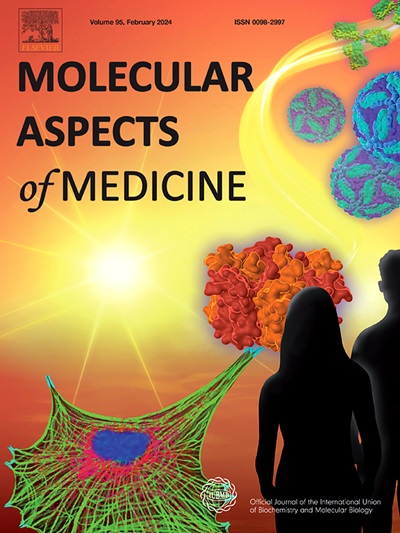When to suspect and how properly early detect and treat patients with endemic mycoses
IF 10.3
2区 医学
Q1 BIOCHEMISTRY & MOLECULAR BIOLOGY
引用次数: 0
Abstract
Endemic mycoses are caused by dimorphic fungi and eventually molds, as the case of implantation mycoses. In general, these diseases are acquired through trauma or inhalation of fungal elements in the environment, and less frequently by zoonotic acquisition or transmitted during organ transplantation. The target population for endemic mycoses is usually represented by normal hosts with low-income and intensive outdoor activities. Awareness of these diseases remains limited, even in regions with high prevalence, resulting in delayed diagnosis, and affecting the quality of life and outcomes of patients who suffer from these entities. In this review, we summarized relevant information about epidemiological, clinical, diagnostic, and treatment aspects of the most common endemic mycoses, including blastomycosis, coccidioidomycosis, histoplasmosis, paracoccidioidomycoses, talaromycosis, and implantation mycoses. The main goal of this review is to provide key concepts in terms of when to suspect, how early diagnose, and properly treat patients with these mycoses.
何时怀疑以及如何正确地早期发现和治疗地方性真菌病患者
地方性真菌病是由二态真菌引起的,最终由霉菌引起,如着床性真菌病。一般来说,这些疾病是通过外伤或吸入环境中的真菌元素而获得的,较少由人畜共患病或在器官移植期间传播。地方性真菌病的目标人群通常以低收入和密集户外活动的正常宿主为代表。即使在发病率高的地区,对这些疾病的认识仍然有限,导致诊断延误,并影响患有这些疾病的患者的生活质量和结果。在这篇综述中,我们总结了最常见的地方性真菌病的流行病学、临床、诊断和治疗方面的相关信息,包括芽孢菌病、球孢子菌病、组织浆菌病、副球孢子菌病、talaromycosis和着床真菌病。本综述的主要目的是提供关于何时怀疑、如何早期诊断和正确治疗这些真菌病患者的关键概念。
本文章由计算机程序翻译,如有差异,请以英文原文为准。
求助全文
约1分钟内获得全文
求助全文
来源期刊

Molecular Aspects of Medicine
医学-生化与分子生物学
CiteScore
18.20
自引率
0.00%
发文量
85
审稿时长
55 days
期刊介绍:
Molecular Aspects of Medicine is a review journal that serves as an official publication of the International Union of Biochemistry and Molecular Biology. It caters to physicians and biomedical scientists and aims to bridge the gap between these two fields. The journal encourages practicing clinical scientists to contribute by providing extended reviews on the molecular aspects of a specific medical field. These articles are written in a way that appeals to both doctors who may struggle with basic science and basic scientists who may have limited awareness of clinical practice issues. The journal covers a wide range of medical topics to showcase the molecular insights gained from basic science and highlight the challenging problems that medicine presents to the scientific community.
 求助内容:
求助内容: 应助结果提醒方式:
应助结果提醒方式:


